Leopardi and L’Infinito
The well-known romantic poet Giacomo Leopardi (1798-1837) died at the age of only 39 and suffered from a lack of money throughout his life. He was sickly and felt restricted in his parents’ home and the Catholic province. In one of his most famous poems, L’infinito, he described the view of hills and the sea that he enjoyed from the gardens not far from his parents’ house in Recanati. In just a few lines he expressed his longing for space and escape. At the same time, he managed to create a declaration of love for the Marchigian landscape. He had spent years refining this short poem so that it became a masterpiece.
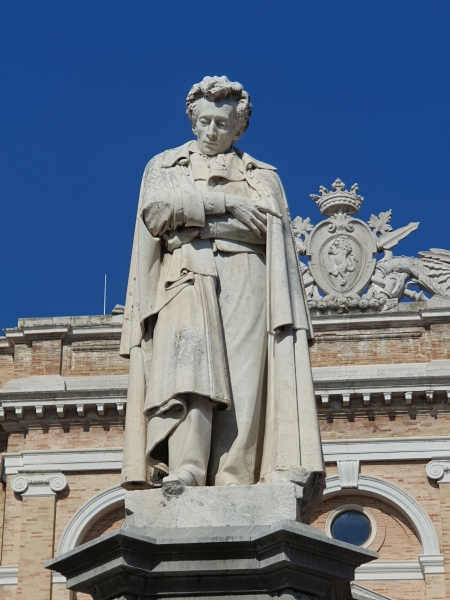
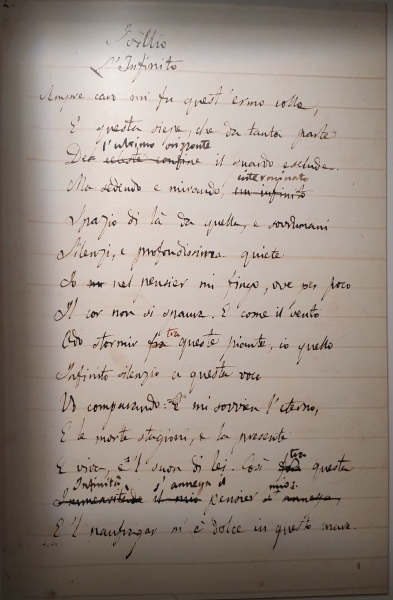
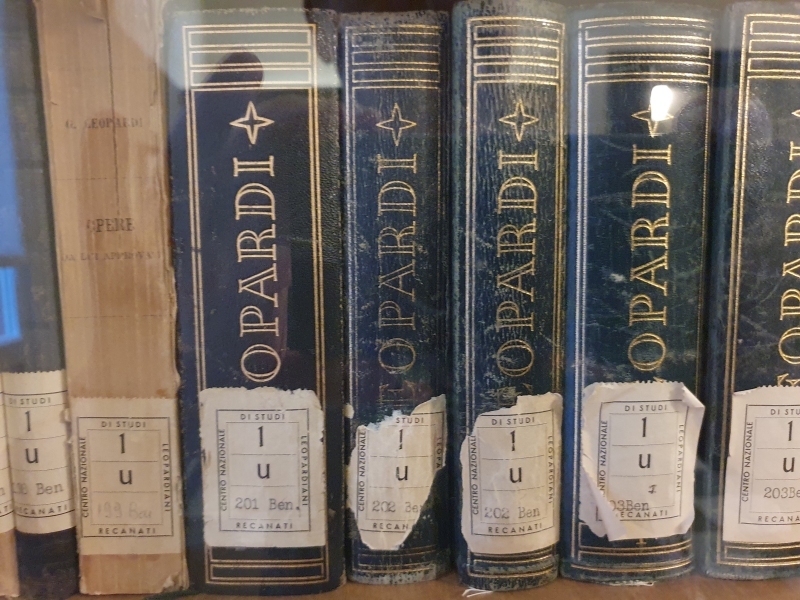
Off to Recanati!
Recanati is one of the must-see places that everyone that attended one school in Le Marche must go to once during their school career. But it is also a very beloved stop-over for every tourist in Le Marche. Elke wanted to find out more about this, so in August she went to Recanati to see the birthplace and the famous garden on the Colle dell’Infinito (Infinity Hill).
Here’s her story about it:
I parked at the spacious Campo Boario and easily reached the old town with the famous view via elevators.

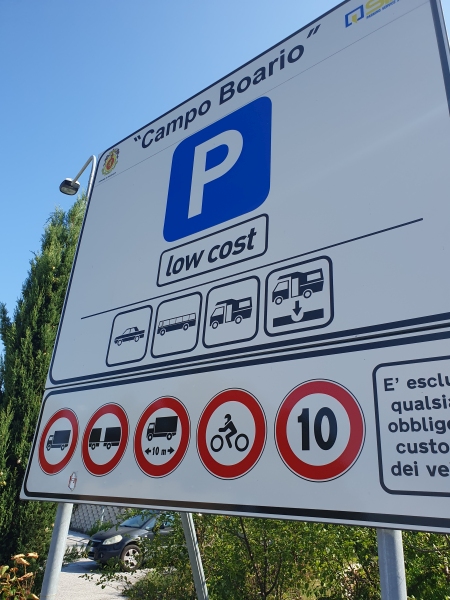
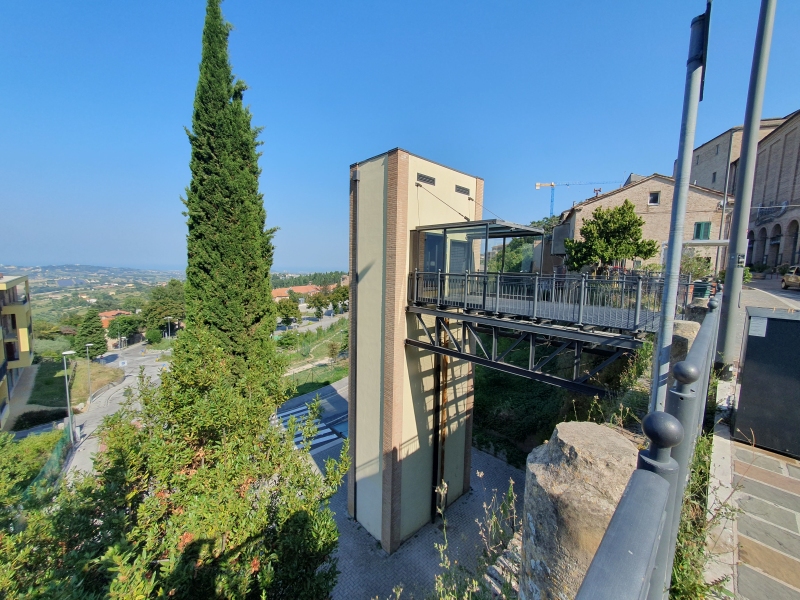
It’s my first time in town and I’m amazed at the well-preserved old town and the mighty defensive tower Torre Civica, to which the poet also dedicated a few lines. There is of course a monument to the city’s famous son in the wide Piazza Leopardi.
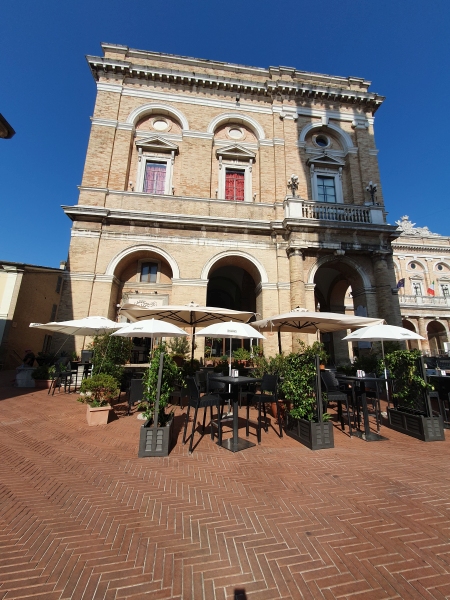
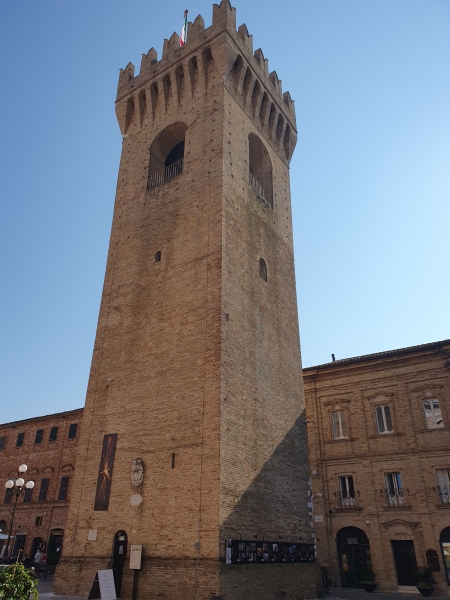



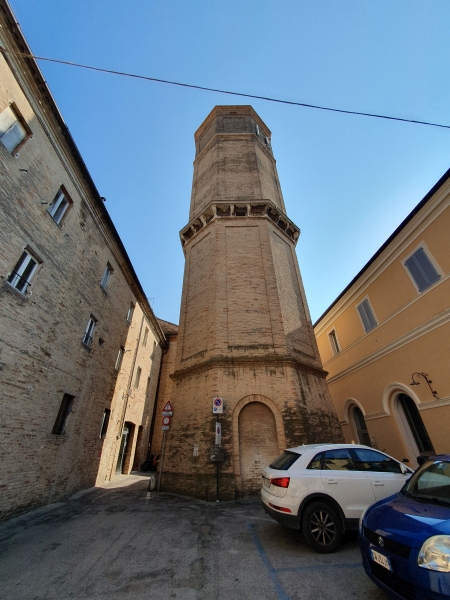
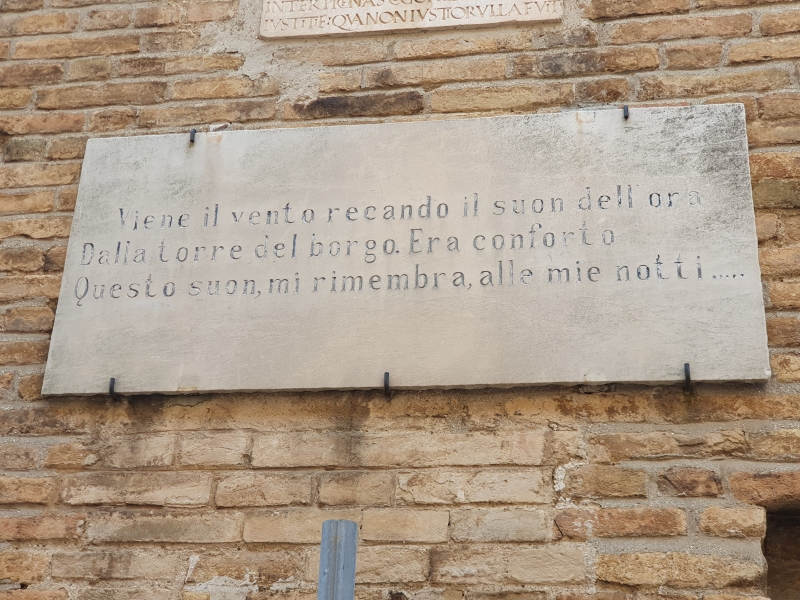

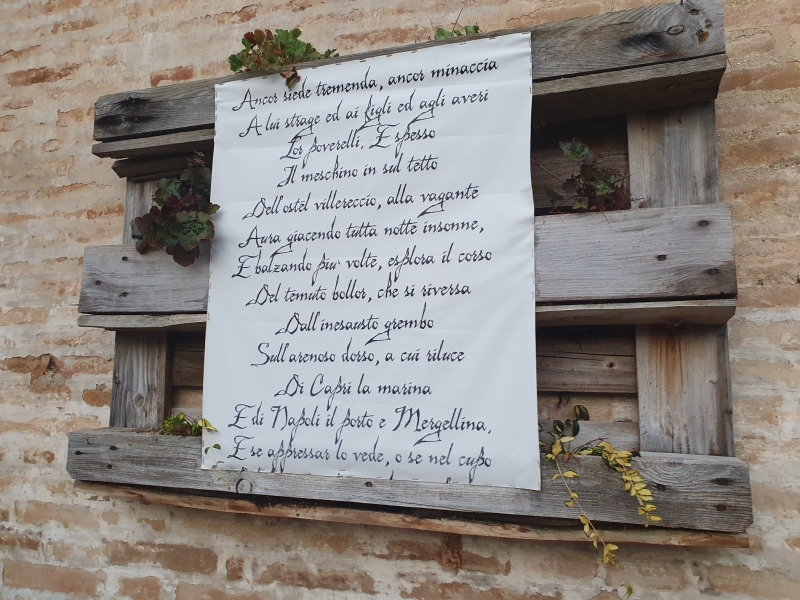
The Casa Leopardi with library and museum
I walked through the old town and reached the Casa Leopardi building complex. The descendants of Leopardi’s brother still live here on the first floor and keep the memory of the exceptional poet alive. On the ground floor there is the Leopardi Museum and with a guided tour you can visit the library, garden and the rooms of Giacomo and his siblings.
Giacomo Leopardi was the eldest of five children of Count Monaldo Leopardi and his wife Adelaide. The family home was extremely strict, but the father was a fanatical collector of books. They mostly came from monasteries that the Napoleonic occupiers closed, so that out of necessity the monks sold off their libraries at dumping prices. The in-house library quickly became too small and so even the servants’ rooms and other rooms were equipped with floor-to-ceiling bookshelves. Very impressive!
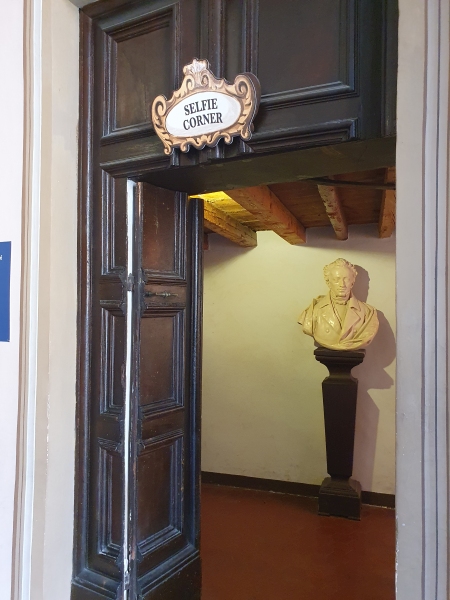
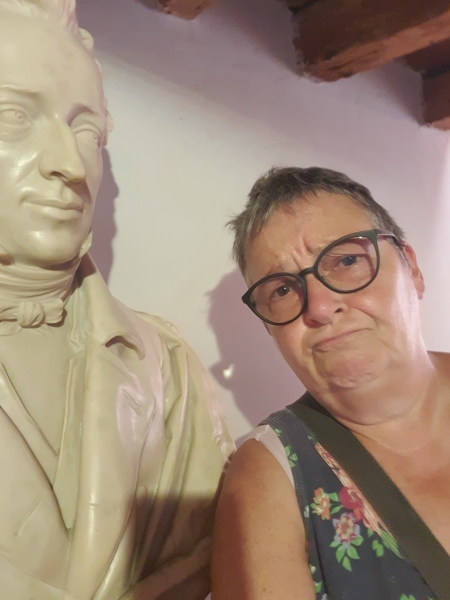
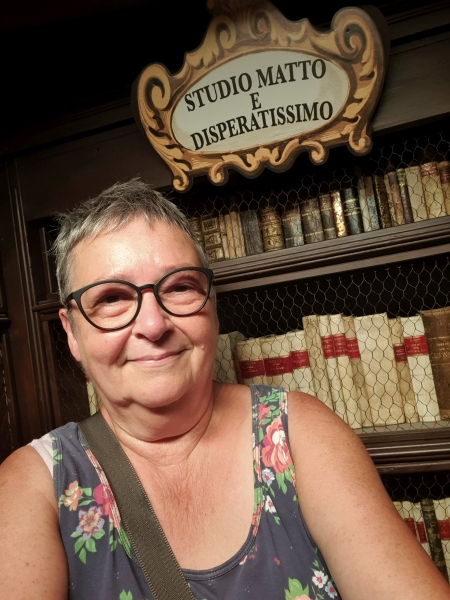
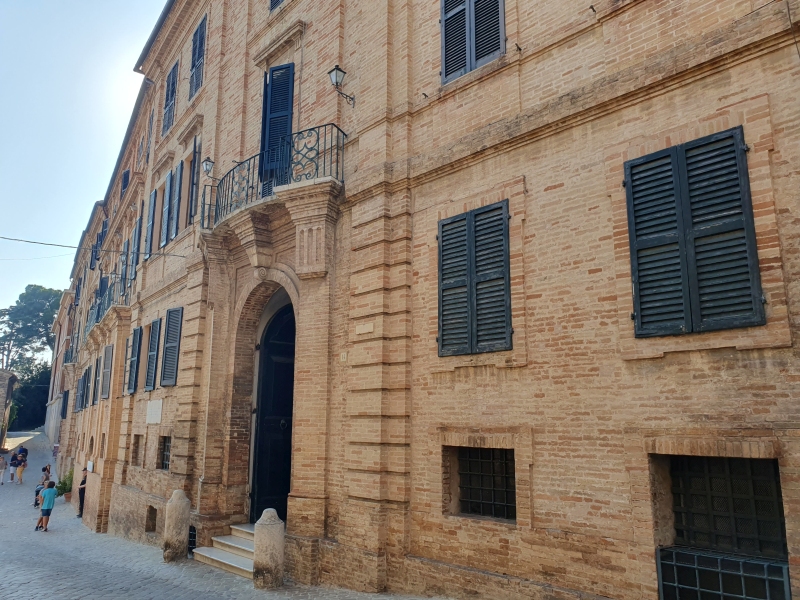
This is where the child prodigy Giacomo grew up: at the age of 11 he already wrote various pieces that filled an entire volume. At 14, it is said, his private teachers could no longer teach him anything. At 16 he began translating important ancient works from Greek. He now spoke 6 languages: Latin, French, Spanish, Hebrew, Greek and English – and I think the guide also mentioned German. Leopardi reads an incredible amount, but also gets along very well with his siblings, who appreciate his imagination in play: they come up with serial stories and fairy tales together. The parents, on the other hand, rule with a strict hand and often fight among themselves due to lack of money.
Of course we are referred to the window in the study where Leopardi often sat and worked. Later we can also take a look into the bedrooms.
Through the garden I reach the Leopardi Museum, which I find less interesting and somewhat unstructured, while I still linger in the impression of the book-filled living rooms.
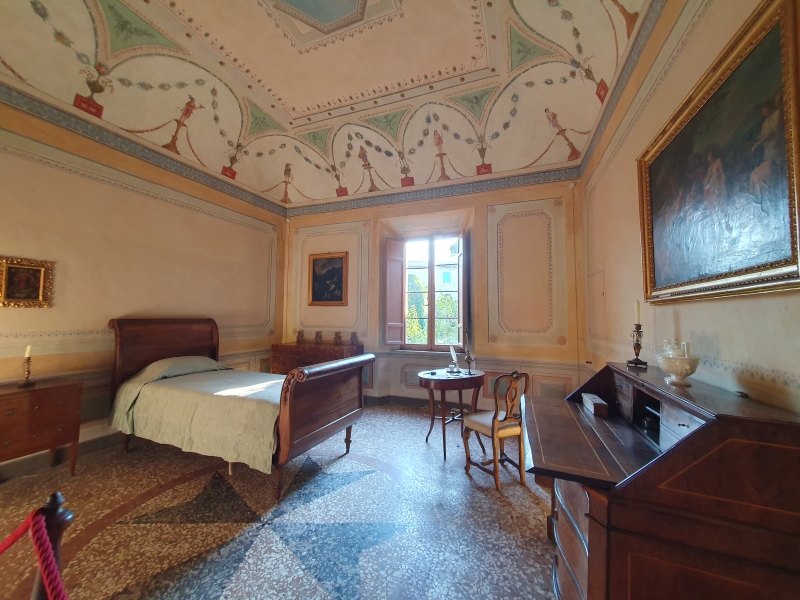
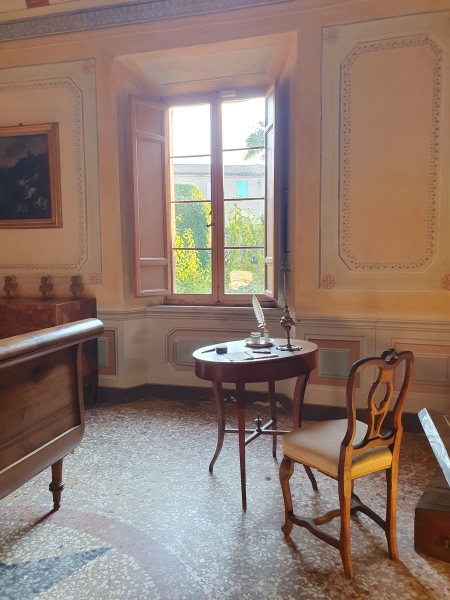
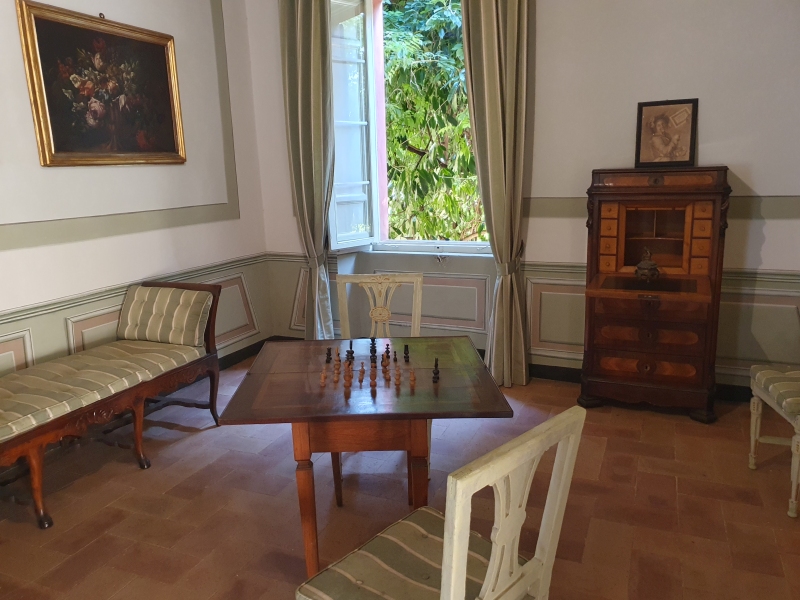
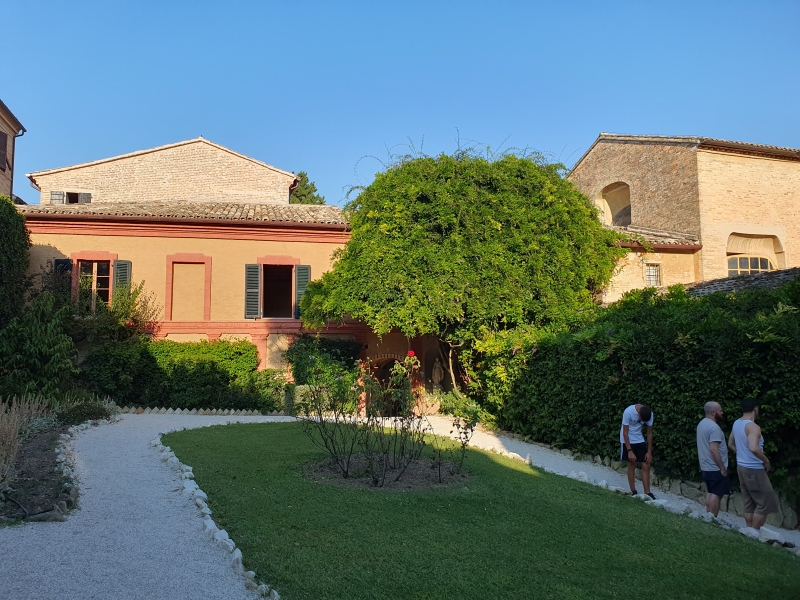
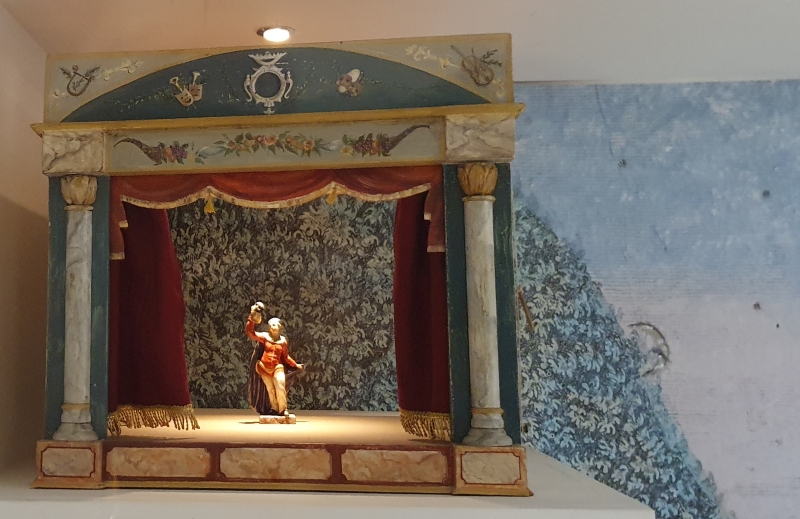
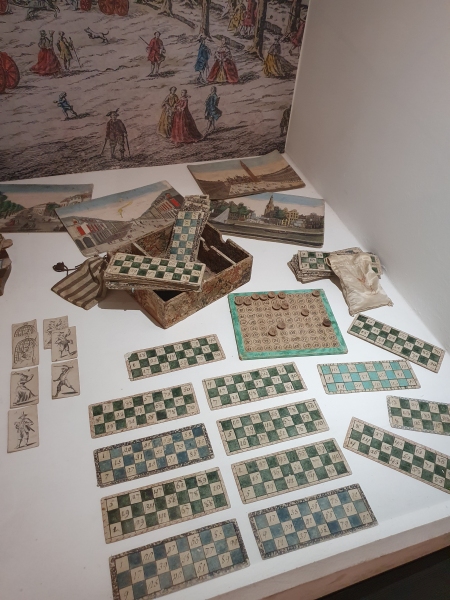
The garden at Colle dell’Infinito
Now I also want to look at the famous garden on the Colle dell’Infinito, the hill of infinity: the FAI (Fondo Ambientale Italiano) opened it in 2019 at the place that Leopardi probably had in mind when he wrote L’Infinito former garden restored.
First I have to buy my ticket in a building and then I can immerse myself in the poem L’Infinito in a multimedia presentation. With my knowledge of Italian, I don’t understand everything because the poem is explained in all its complexity by experts. But what I understand I find very exciting:
L’infinito: Original by Leopardi, English translation
Sempre caro mi fu quest’ermo colle,
e questa siepe, che da tanta parte
dell’ultimo orizzonte il guardo esclude.
Ma sedendo e mirando, interminati
spazi di là da quella, e sovrumani
silenzi, e profondissima quïete
io nel pensier mi fingo, ove per poco
il cor non si spaura. E come il vento
odo stormir tra queste piante, io quello
infinito silenzio a questa voce
vo comparando: e mi sovvien l’eterno,
e le morte stagioni, e la presente
e viva, e il suon di lei. Così tra questa
immensità s’annega il pensier mio:
e il naufragar m’è dolce in questo mare.
This solitary hill has always been dear to me
And this hedge, which prevents me from seeing most of
The endless horizon.
But when I sit and gaze, I imagine, in my thoughts,
Endless spaces beyond the hedge,
An all encompassing silence and a deeply profound quiet,
To the point that my heart is quite overwhelmed.
And when I hear the wind rustling through the trees
I compare its voice to the infinite silence.
And eternity occurs to me, and all the ages past,
And the present time, and its sound.
Amidst this immensity my thought drowns:
And to flounder in this sea is sweet to me.
[Fun fact: even Patti Smith read the Infinite during one of her Italian concert tour leg: https://www.youtube.com/watch?v=hJz8ivq7CeI]
Well prepared, I enter the garden expectantly: it is evening and the sunset is approaching, so that everything appears in a rich, powerful light. I am almost alone and in the relaxing silence I can take in the view of infinity that seems to surround me and the beautifully landscaped garden.
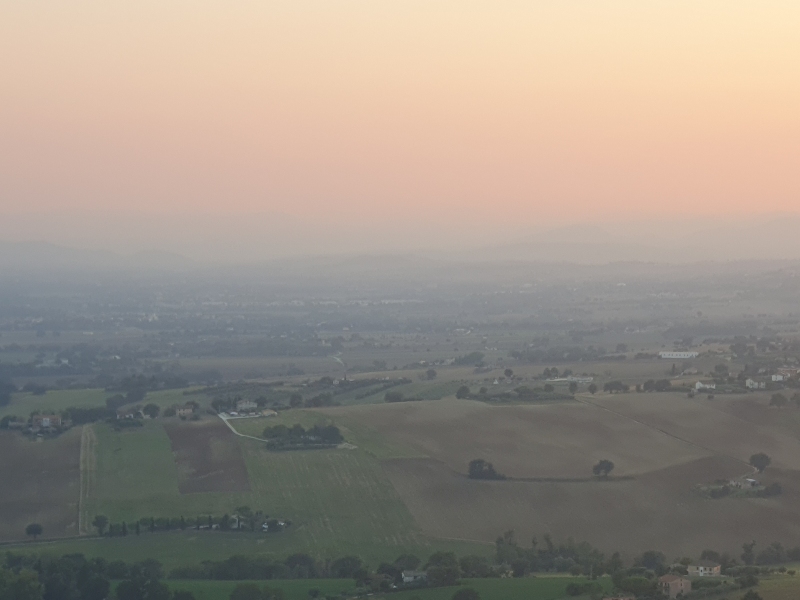
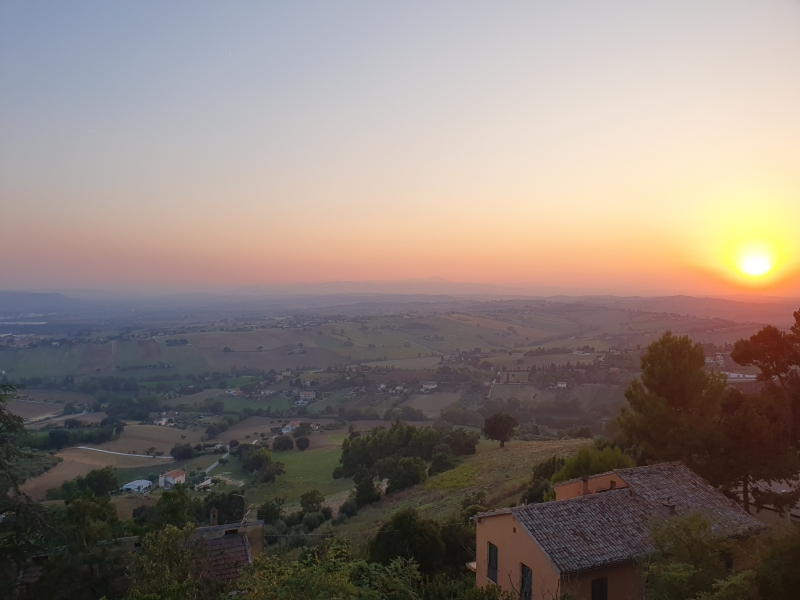
In Italian, a distinction is made between the vegetable garden (Orto) and the ornamental garden (Giardino) and the garden in this case is called Orto: in fact it is a lush vegetable garden, but it is designed like an ornamental garden. Garden architects were certainly at work here. Tomato bushes line up in rows, juicy grapes hang from the arbors, a fat watermelon peeks out from the leaves growing on the ground and pears adorn some of the trees.
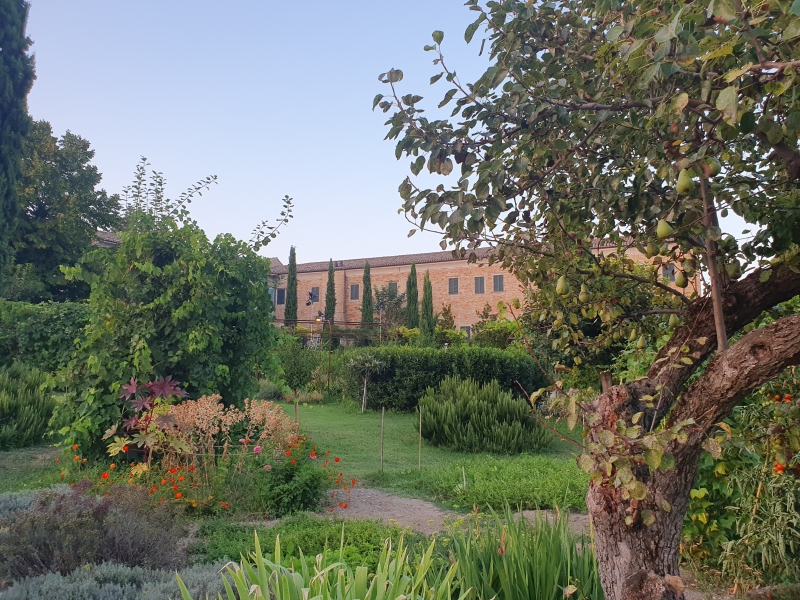
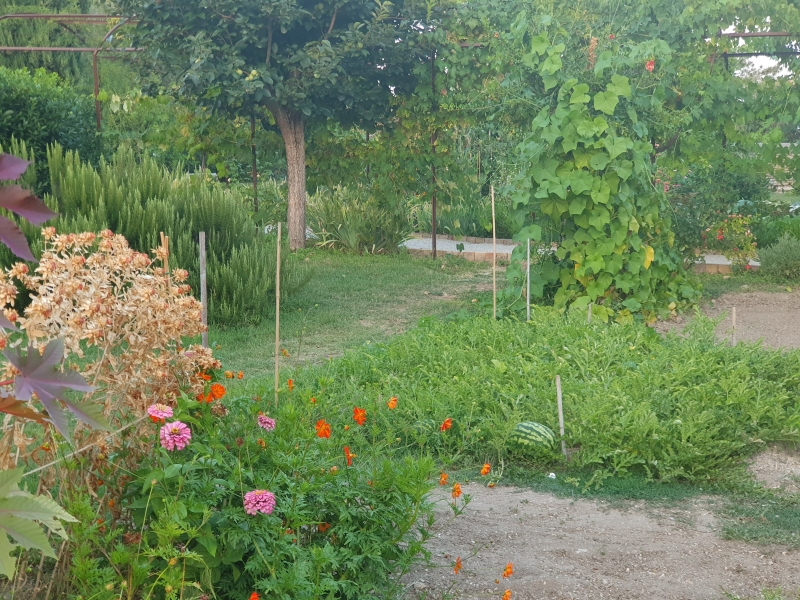

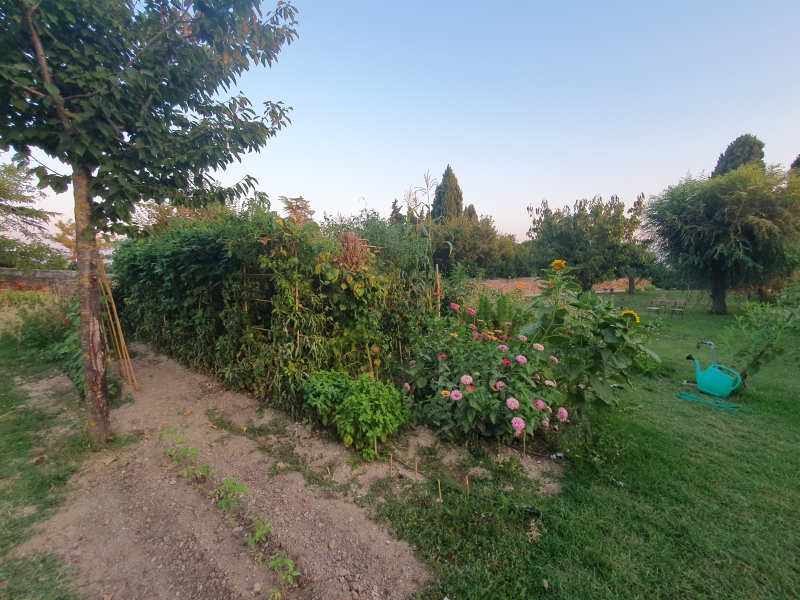
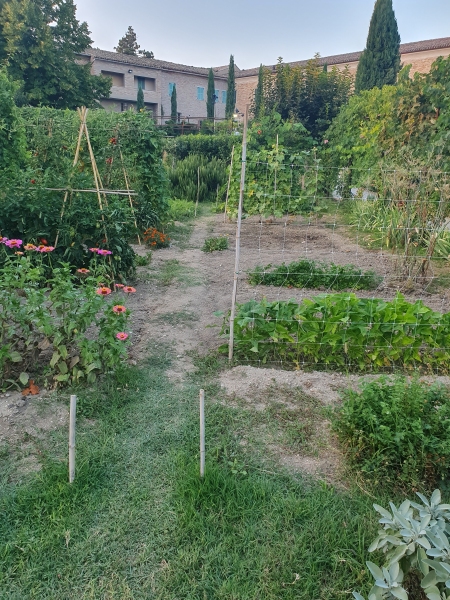

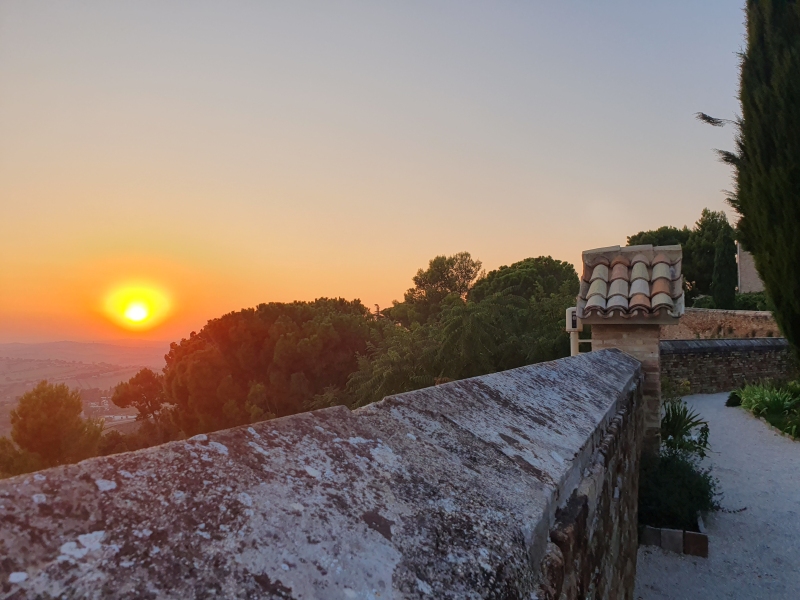
This is what paradise can look like, I think. No wonder Leopardi dreamed away here with melancholy and affection.
Last years and death of Leopardi
It remains to be mentioned that after some effort, Leopardi managed to escape the cramped parents’ home. He had to live in poor conditions in Milan, Rome and finally in Naples. Despite his genius, he couldn’t find suitable jobs. Possibly because he was politically committed to an Italian nation-state without church influence. However, he received an offer to the Dante Chair in Bonn, which he declined because he did not want to leave Italy.
In his last years in Naples, during which he lived in cramped conditions with his friend and political companion Antonio Ranieri, his health continued to decline: he had survived a cholera epidemic, but his eyesight became increasingly poor (so that he had to dictate his texts), he became increasingly weaker and died of pulmonary edema in 1837. The good Ranieri was just able to prevent Leopardi’s body from ending up in a mass grave. Today he is buried in a grave in the Parco Virgiliano in Naples, which is a national monument. Leopardi left behind a large and extensive literary work and is an integral part of Italian school lessons.
My day in Recanati is coming to an end. I enjoy a few more minutes in the beautiful Piazza of Recanati and think of Giovane Favoloso, the fabulous young man, as Giacomo Leopardi is called.
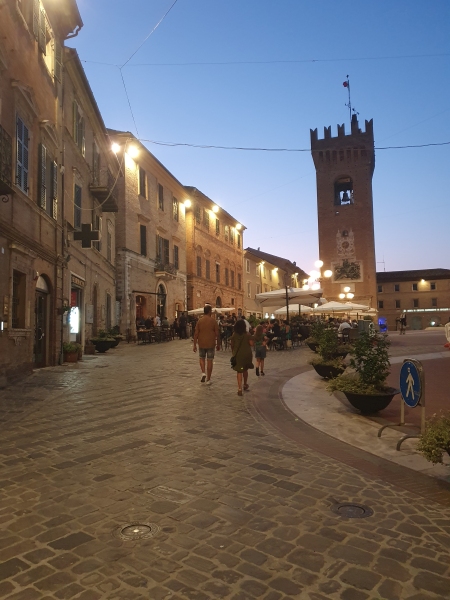
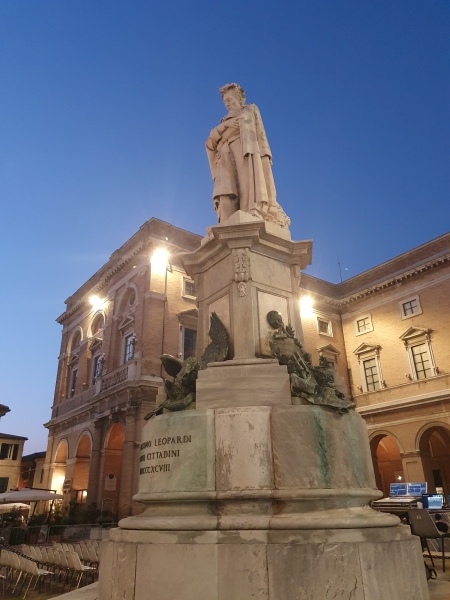
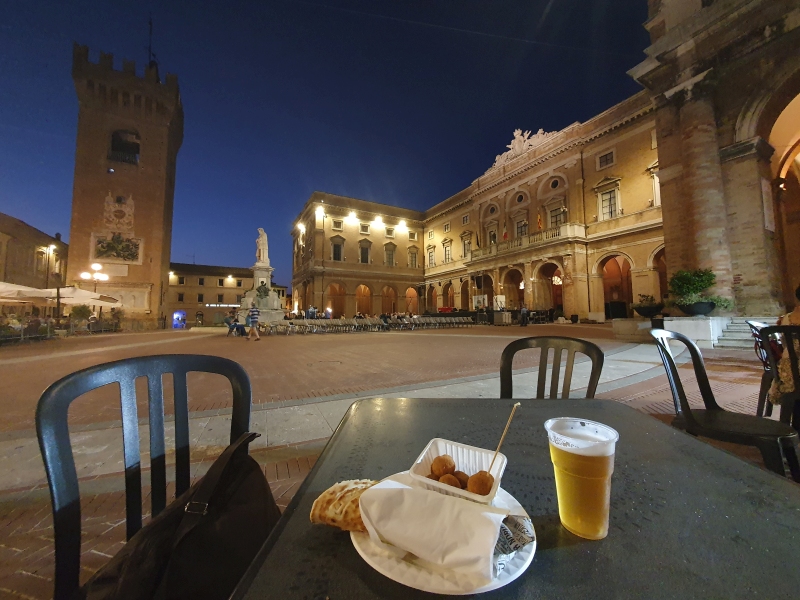
The trip to Recanati was the most beautiful one I took this year. And I only focused on Leopardi. There are many other things worth seeing, so I will definitely be back soon: the Emmigration Museum, the Music Museum, the traces of the opera tenor Beniamino Gigli, the Augustinian convent with church, the Torre Civica, the picture The Annunciation by Lorenzo Lotto in the city museum.. .
Practical tips
- Below Recanati there is a large, cheap car park at Campo Boario: on weekdays you pay EUR 1.20 per hour; It is free at lunchtime and on public holidays. From there you can easily take the elevator up to the old town.
- In the summer months it is advisable to pre-book a ticket for the tour of the library and the Leopardi bedrooms. You can do this on this website, where the current opening times are also listed. Unfortunately the tour is only in Italian, English is only offered for private tours, for which you have to be 26 people (or pay for 26)
- The opening times can be found on the Orto dell’Infinito website and you can also pre-book tickets here. However, I got in in August without booking in advance.
- Leopardi’s life was made into a film under the title “Il giovane favoloso” and presented at the 2014 Cannes Film Festival. I didn’t find any streaming, but there are DVDs. We talked about it in one of our very first posts.


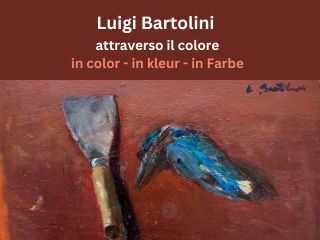

0 Comments